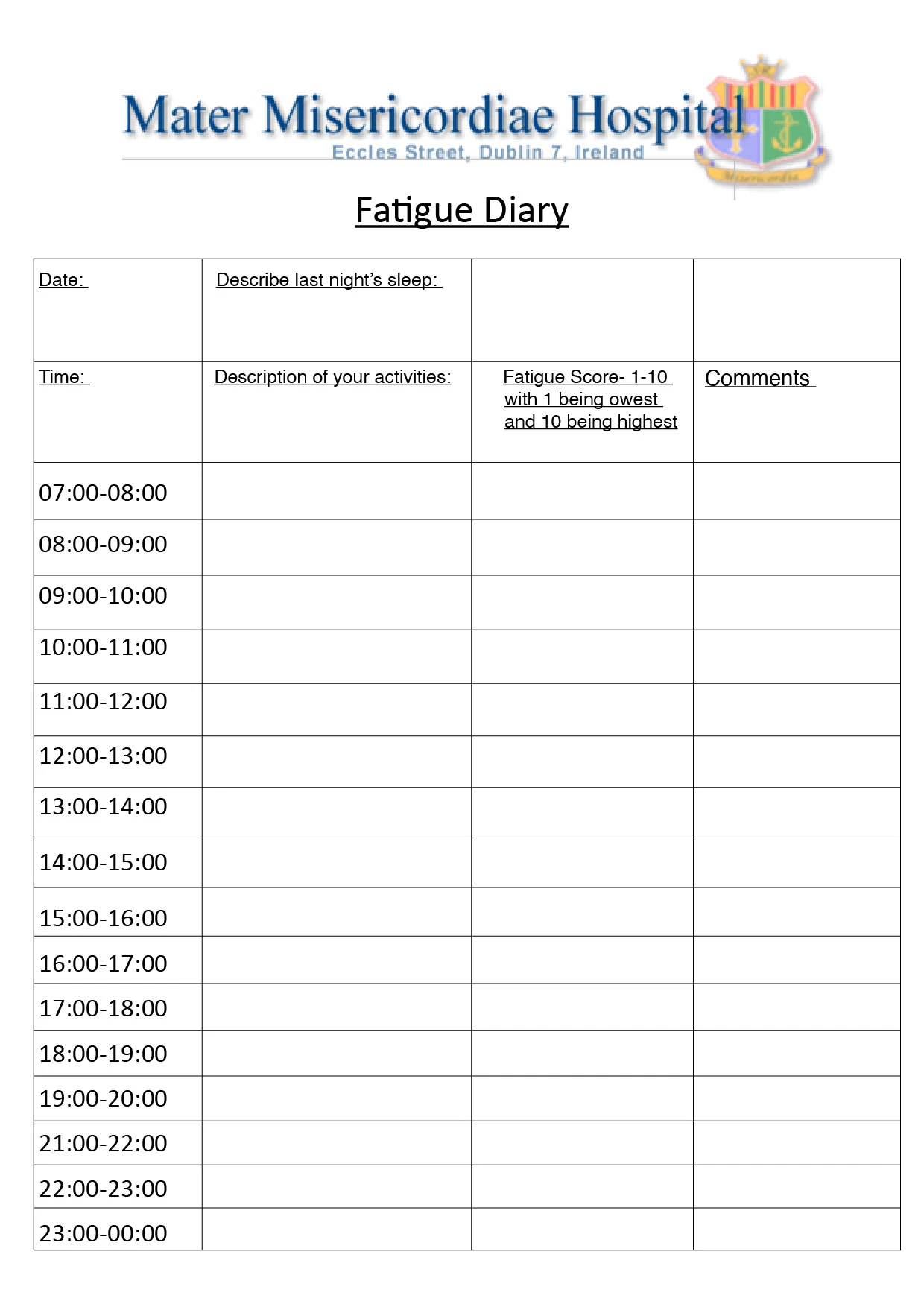Fatigue
- Áine Keher, Occupational Therapist
- 4 minute read
- Last updated: September 2023
Fatigue is a very common symptom that people experience after a stroke or transient ischemic attack (TIA). However, there are strategies you can use to lessen its impact on your daily life. As you continue to recover, feelings of fatigue usually improve.

Fatigue after stroke

What is post-stroke fatigue?
Post-stroke fatigue is a feeling of intense tiredness that does not go away even if you get enough rest. It is not caused by exercising or doing a lot of activities. You feel fatigued because of the physical, cognitive (thinking) and psychological changes brought on by your stroke. It is very common for people to experience post-stroke fatigue.
The exact cause of post-stroke fatigue is not known, but certain things most likely contribute to it:
- After a stroke, activities require more energy, from both a physical and cognitive perspective.
- Going through rehabilitation involves learning new skills.
- If you have swallowing or eating difficulties, you may not be taking in enough nutrients.
- Certain medications can cause fatigue. If you think this applies to you, discuss it with your medical team or pharmacist.

What can I do to manage my fatigue?
Your occupational therapist (OT) can provide you with fatigue management strategies. You can use these during stays in hospital, during rehabilitation and also when you have been discharged home from hospital. It is important that these strategies take into account your goals, routines, roles and interests.
Helpful strategies
The four P’s of fatigue management set out some general strategies that you can use in your daily life.
Planning
Plan out your day the night before or in the morning. This will give you an overview of what you need to do and when to schedule in rest periods/breaks. Initially, plan one activity in the morning, afternoon and evening.
Here is an example of a Fatigue Diary that you could use.
Prioritising
When you feel fatigued, it may be difficult to finish all of the daily tasks you need/want to do. It is a good idea to prioritise the tasks that are most important to you. By doing this, you can set yourself up for success.
Pacing
Pace yourself during tasks. Give yourself extra time to finish so that you don’t have to rush or put yourself under pressure.
Positioning
Identify positions that make your fatigue worse or better. Some people find standing rest breaks to be helpful, while others feel that completing a task from a seated position is more effective.

Boost your mood

Deep breathing
Deep breathing or “belly breathing” can boost energy. It improves oxygenation in the body and can give a sense of calm. See below for how to do deep breathing.
Step 1
Sit in a comfortable position
Step 2
Close your eyes
Step 3
Breathe in slowly and count to five
Step 4
Fill your belly with air
Step 5
Breathe out through your mouth slowly
Step 6
Repeat the cycle 5 times
Other information
Top tips
Keep a routine
Follow your daily plan and keep it structured. Promoting a sense of routine can reduce mental fatigue. Use strategies such as calendars or alarms to make sure you follow your daily plan.
Libby Cunningham | clinical occupational therapist |
Be open
Talk to your friends and family about what you find helps or worsens your fatigue. They will then be primed to support you with managing symptoms.
Libby Cunningham | clinical occupational therapist |
Take care of yourself
Make sure you are eating healthily and staying hydrated. Stay active and avoid alcohol. Napping during the day can help some people, but make sure it is not impacting your sleeping throughout the night.
Libby Cunningham | clinical occupational therapist |
Frequently asked questions
Consider contacting your GP (family doctor), the Irish Heart Foundation or your stroke nurse.
Use a printed-out timetable, diary or calendar to plan your day. Use alarms to remind you to do tasks or take breaks. Get your family and friends involved with encouraging or reminding you to follow your daily plan.
Fatigue symptoms can often present in a unpredictable way. You may have “better days” but it is important to continue to use fatigue management strategies. Listening to your body and respecting what it is able to do is vital.
Useful links
Royal College of Occupational Therapist | How to manage your energy levels